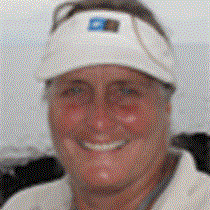Santa Cruz
We anchored in Academy Bay before dawn and reluctantly rolled out of our beds after a good night’s sleep. Our reluctance soon fled as we enjoyed a hearty breakfast of eggs benedict and smoked trout. Outside the restaurant, looking towards shore, we could see houses along shore of the inhabited island of Santa Cruz and there were dozens of yachts large and small anchored with us in the harbor. Puerto Ayora is the largest town in the archipelago and is home to some 18,000 people. The Galápagos National Park and the Charles Darwin Research Station have their headquarters here and together they direct and supervise the conservation projects and research designed to restore and protect these unique islands.
This morning we disembarked on the National Park dock and walked up to the tortoise breeding center. We followed a boardwalk between tall cactus trees, then past lava enclosures where adorable tiny tortoises stumbled along investigating their surrounding s and searching for food. These year-old and two-year-old babies are destined to be returned to the islands from which their parents originally came, and are part of a very successful repatriation program. We also saw adult tortoises and were thrilled in particular to see the famous “Lonesome George” who is the last individual from the northern island of Pinta. Sadly he seems to not be inclined to breed even though female tortoises that are fairly closely related to him share his enclosure.
“Super Diego” is another story completely: he is from the southeastern island of Española, and has proved himself to be a champion breeder. Diego was returned to Galápagos over 40 years ago from the San Diego Zoo tortoise collection. In the mid 60’s the Charles Darwin Research Station did a census of tortoises on the various islands and quickly realized that the Española population was in dire straits. Moved to the Station enclosures so they could find one another to reproduce, from a dwindled adult population of 15 animals over 2000 have successfully been repatriated back to the wilds on the island of Española. We enjoyed hearing about this success story and seeing some of the tortoises that are part of this extremely successful breeding program.
Afterwards we walked down through the town, shopping, observing and taking many pictures. At the fish market we laughed as we watched a cheeky sea lion and several juvenile pelicans vying for scraps as the fishermen cleaned their catch. This is a clean and welcoming town and we liked the chance we were given to explore it.
During our afternoon visit to the lush green highlands of Santa Cruz, we crossed through a damp and dark lava tunnel, ate a delicious buffet lunch, donned black rubber boots to protect our feet, and then searched for wild giant tortoises among the grasses and shrubs of open farmland. Later we drove higher into the National Park lands and hiked in an endemic Scalesia forest observing the finches, ferns and even a few tiny orchids among the moss covered branches of the giant daisy trees.
In the late afternoon we shopped some more in town, carefully selecting special T-shirts that will remind us of these magical islands once we return home, and boarded the National Geographic Islander for our evening program and dinner. One final day in the “Islas Encantadas” awaits us tomorrow.




